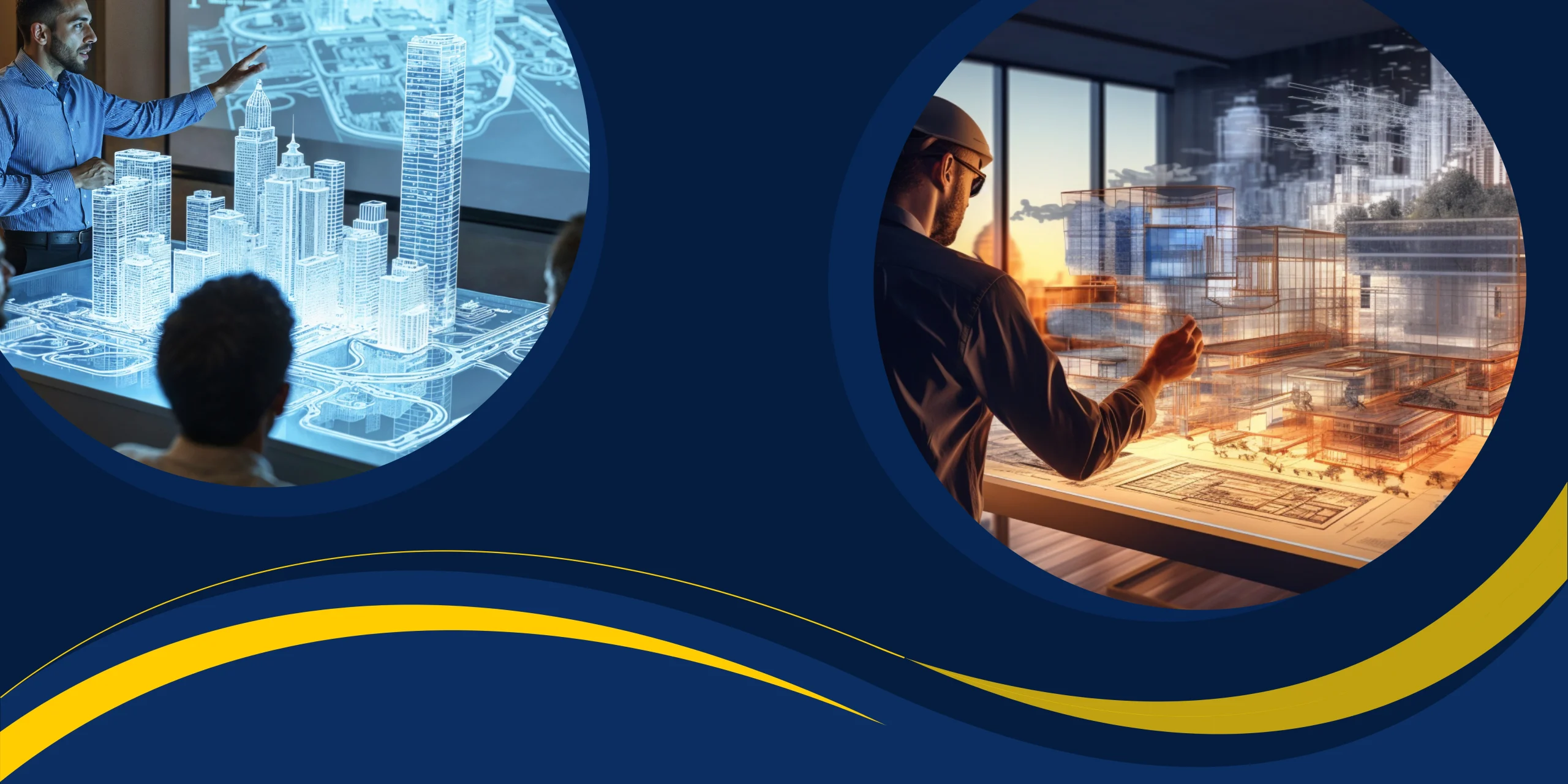June 26th, 2025
Category: augmented reality
No Comments
Posted by: Team TA

As urban populations grow rapidly, the demands on city planning and infrastructure development are becoming more complex. Traditional visualization tools like 2D CAD and 3D BIM offer digital representations but lack the immersive, real-time context needed for efficient decision-making. This is where augmented reality (AR) and 3D visualization step in, offering powerful tools to enhance planning, communication, and management across large-scale infrastructure projects such as bridges, tunnels, and urban transport systems.
AR helps engineers and planners view structures in their actual surroundings by superimposing digital models on top of real-world environments. This enhances collaboration, lowers errors, and prevents expensive delays.
How does Augmented Reality Work?
By combining digital content with the real world, augmented reality (AR) allows users to interact with 3D models, instructions, or virtual objects superimposed on their actual environment. With augmented reality (AR), users can see complex information, such as building structures or on-site workflows, in real-time, rather than as static images.
Devices with AR capabilities, such as smartphones, tablets, or smart glasses, are used to operate it. These tools detect the real world and project digital elements into it using cameras, sensors, and intelligent software.
Infrastructure Management with Augmented Reality
Explore how augmented reality and 3D visualization are revolutionizing infrastructure management and resolving longstanding challenges.
1. AR Visualization and Design
By substituting immersive, interactive models over flat drawings, augmented reality (AR) and 3D visualization revolutionize infrastructure management. With the help of these tools, engineers, and planners can see structures from all perspectives in real-world situations, which facilitates coordination, helps identify design flaws, and prevents expensive delays. AR helps teams make better decisions and provide safer, more effective infrastructure solutions by bringing complicated projects to life before construction begins.
2. Enhancing Bids with AR Presentations
AR technology allows users to explore complex, interactive models instead of static images. This allows them to walk through proposed areas, examine sustainable features, and understand intricate systems in real-time. Whether a homeowner is showing off a dream kitchen or a city council is touring a potential hotel, these engaging presentations create excitement, foster trust, and greatly increase the likelihood of winning bids and project approvals.
3. Real-Time Project Information
Team members can view interactive 3D models and updated design data overlaid onto the real world instantly with AR, which enhances coordination and clarity. By walking through construction zones with AR headsets, project managers can identify problems early on, minimize delays, enhance communication, and save money. Throughout the project lifecycle, everyone stays on the same page, and decision-making is smooth due to access to up-to-date information.
4. On-site Management and Collaboration
AR enables on-site managers to view and share 3D models, design blueprints, and precise measurements instantly, making it easier to spot issues and make decisions on the go. By keeping everyone in sync, from engineers to architects, this shared visual experience minimizes miscommunications and delays. AR improves collaboration, communication, and project execution by providing access to the same updated model from any location
5. Accurate Measurements
By superimposing interactive 3D models directly onto actual spaces, augmented reality enables infrastructure teams to take incredibly precise measurements. In contrast to static screens or flat 2D plans, AR makes designs come to life on location, enabling engineers to identify and correct mistakes early. Construction is done with greater precision, reducing costly mistakes and ensuring that it is done right the first time.
6. Safety training
By providing immersive, risk-free learning experiences, augmented reality and 3D visualization are transforming infrastructure management safety training. Workers can safely practice safety procedures in a controlled environment while participating in lifelike simulations of dangerous situations, such as working at heights or handling equipment failures. By increasing awareness, developing decision-making skills, and lowering on-site accidents, this practical method makes job sites safer.
7. Maintenance and Repair of Buildings
The use of augmented reality has redefined building maintenance by providing a comprehensive view of structures, including hidden components such as pipes and wiring. It saves time and money by precisely identifying problems without damaging surfaces or walls. Step-by-step repair guides and AR-powered digital twins give technicians on-site access to real-time support and data. This increases accuracy, speeds up repairs, and simplifies overall building maintenance.
Advantages of Augmented Reality in Infrastructure Management
Infrastructure management is being reshaped by augmented reality, which strengthens every stage of a project, from planning to implementation. Helping employees complete challenging tasks and identifying risks in real-time increases safety. Shared, interactive 3D models facilitate better teamwork even when teams are spread out geographically.
Through the early detection of design flaws, AR increases productivity, minimizes delays, and reduces material waste. With the help of immersive design visualization, it also enables engineers and architects to make more informed decisions. Ultimately, AR improves construction by bringing accuracy, speed, and clarity, which helps produce better results while saving lives, time, and resources on the job site.
Challenges of AR Implementation
There are difficulties in integrating augmented reality into infrastructure management, but these can be overcome with the right strategy. It can be challenging to integrate AR with current construction software, so picking platforms that work well together is essential. Starting with smartphones or tablets provides an accessible entry point, even though high-end AR devices can be expensive or large.
Data security and privacy are also important; access controls and encryption are crucial for protecting site data. These obstacles can be transformed into stepping stones for more effective and future-ready infrastructure management with careful planning, clever technology choices, and a dedication to advancement.
Wrapping Up
Construction is becoming more intelligent, quicker, and more accurate thanks to augmented reality and 3D visualization, which is revolutionizing infrastructure management. Adopting these technologies gives your company a strong competitive edge in addition to increasing project efficiency. With the help of our AR development services team, you can discover new opportunities and attain outstanding outcomes that boost trust, foster loyalty, and shape the future of construction.